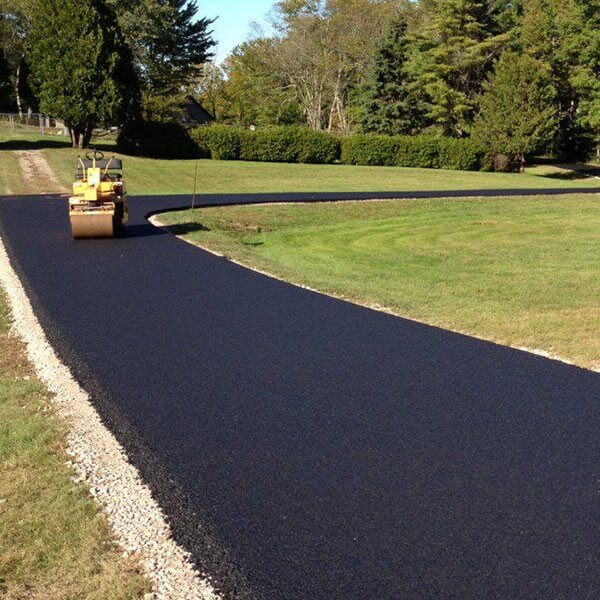Types and brands of asphalt pavement
Asphalt is widely used for driveway paving nowadays by the driveway paving contractors. In the past, the asphalt is also used, like as an adhesive material, waterproofing, for the preparation of varnishes, etc. Asphalt is the best material for paving roads or driveways and also cheap than other materials. There exists different brands of asphalt which are used in different places. When we use the asphalt material for paving it is necessary to compact it batter because Proper and high-quality compaction of asphalt determines its service life. So at the end, there is a discussion of how to compact asphalt.
So, in the process of performing work, experts can use the following types of asphalt and brands:
1. Hot Type “B” Brand 3: The mixture is made from viscous bitumen, which gives good traction performance. This asphalt is used for the arrangement of the upper layer of highways, city roads and sidewalks, bridges, and other spaces. The material is delivered to the working place in a hot condition (at a temperature of 120 ° C). Laying off this type of asphalt should be done no later than 1-2 hours from the moment of shipment, because, as it cools, the material loses its basic properties and material start to become hard.
2. Hot Type “B” Mark 2 and Hot Type “A” Mark 1: The maximum crush size of such a mixture is 20 mm. For the manufacture of this type of coatings use oil bitumen of a certain viscosity. Laying the mixture is made in a hot condition, no later than 1-2 hours after shipment. The dense consistency and high density indicates to make the coatings indispensable for arranging the upper layer of highways and other territories with an intensive traffic flow.
3. Cold type “Вх” mark 2: It is used for patching of motorways, for arranging areas adjacent to buildings of areas, flat roofs. This type of asphalt pavement also serves as a waterproofing agent.
4. Coarse Grain Brand 1: Hot mix with a maximum granule size of up to 40 mm. For its preparation using viscous oil bitumen. Resistant to acids, alkalis, moisture, and mechanical stress. Laying of this brand of asphalt is carried out at a temperature of 120C.

5. Hot type “B” brand 2 and hot type “B” brand 1: The main difference between the types is their composition. In the application, both the first and second options are similar – they are used for arranging places with high traffic.
Also in the process of laying the coating used bitumen emulsion (EBK-2), which is intended for impregnation of asphalt, which allows to increase the rate of adhesion of the layers between themselves. The material can be used at a temperature from + 5C.
Asphalt pavement classification
If we consider the size of the particles of mineral components, the asphalt pavement can be classified into the following types:
Fine-grained asphalt – particles of such asphalt have sizes from 5 to 15 mm. They have a tight connection with each other. Therefore, when tamping the surface is very smooth and even. Such asphalt is often used when laying platforms and territories of personal plots;
Medium-grained asphalt – the size of the particles ranges from 15 to 25 mm. It can be used for asphalting the streets and squares of the city;
Coarse-grained asphalt – has a large fraction, which can be up to 40 mm. The use of such a mixture is necessary for asphalting road routes, especially where there is a large cluster of cars, including trucks. Such large grains of asphalt can withstand heavy loads of different types of road transport.
Also, in connection with the development of new technologies, colored asphalt was invented, which is referred to as an unusual type. After all, at night it helps to see pedestrian crossings, enhances the lighting in the subways, on the roads, which greatly facilitates the visibility of the review for drivers at night.
How to compact asphalt?
Proper and high-quality compaction of asphalt determines its service life. How to roll and compact asphalt? Asphalt can be vibrated, rolled and rammed. Vibrating plate, manual roller, light vibratory roller.
The temperature of the asphalt for laying should have a value not lower than 105 degrees Celsius. The colder the asphalt, the more passages the roller will need to make. The channel can be wetted with water to avoid sticking of asphalt on the shaft surface. The movement of the roller should be made without reversal movements, smoothly and have the same number of times along all the laying strips. If laying asphalt is carried out on a slope, then its compaction must necessarily take place only from the bottom up the seams that form at the junction of the rolling strips can be aligned perpendicular to the rolling direction. The projection of the roller for unconsolidated cooled asphalt should be no more than 20 cm.
Today, asphalt material is the main road surface and has unique properties. Therefore, the use of this material is increasing every year.